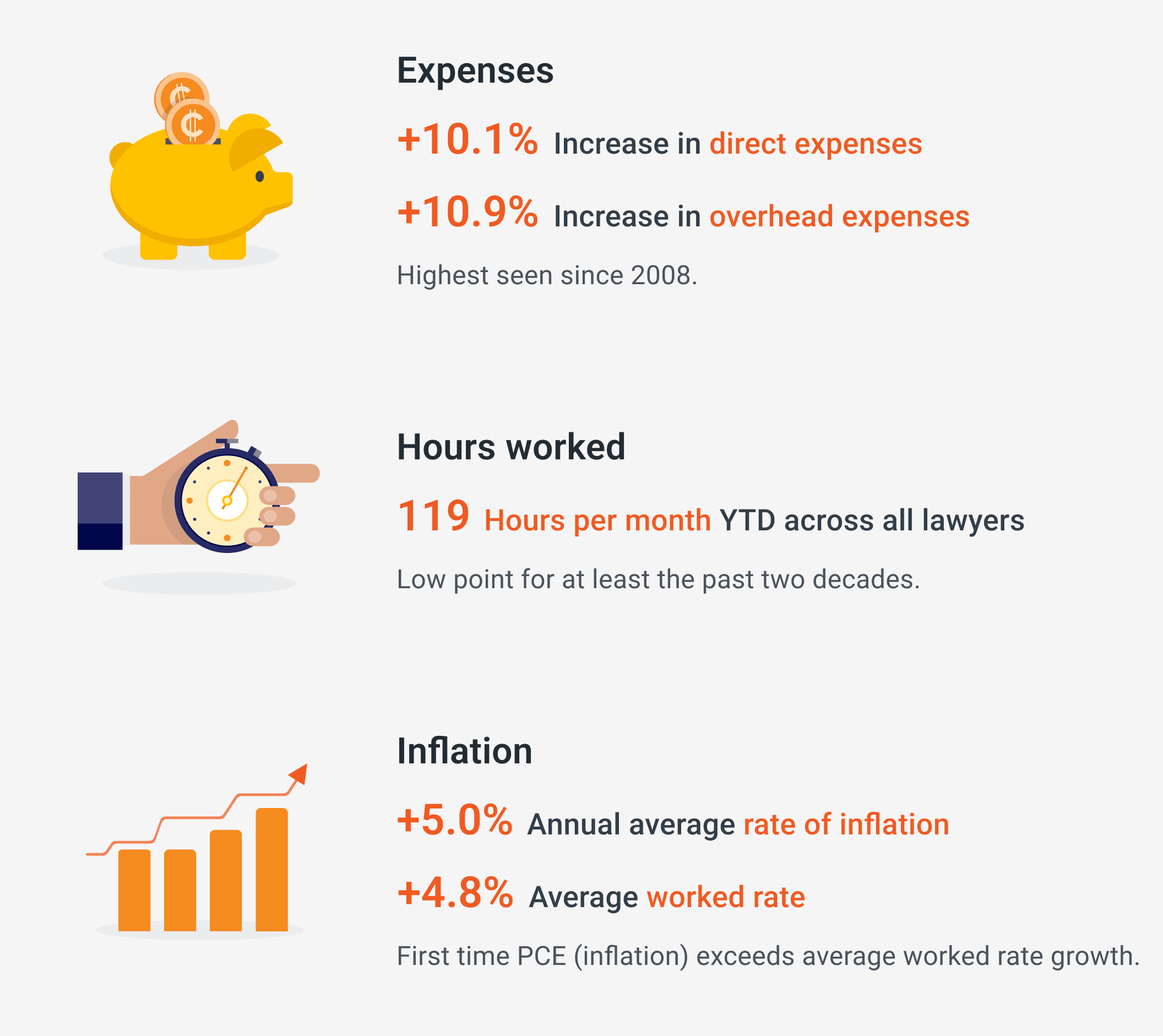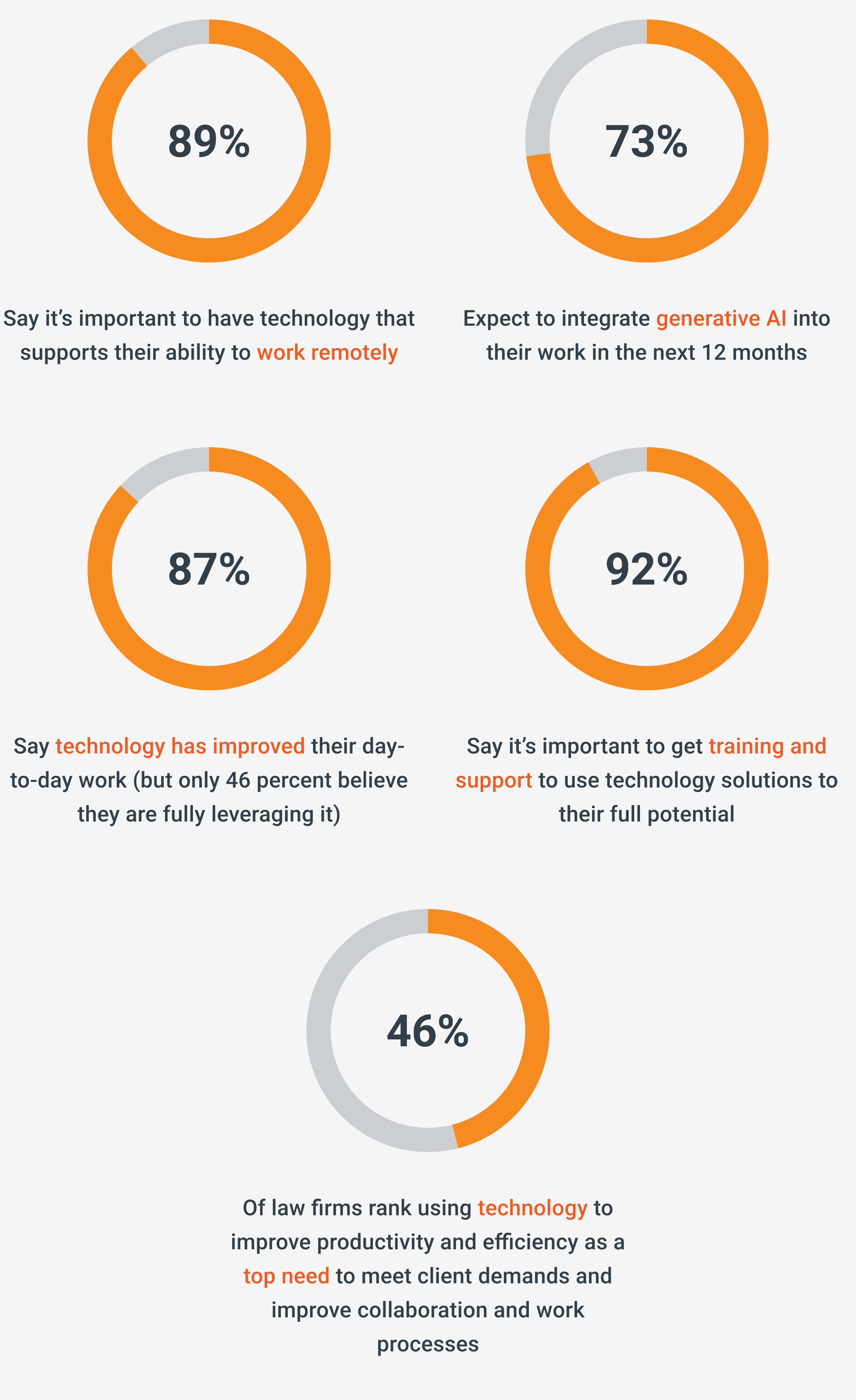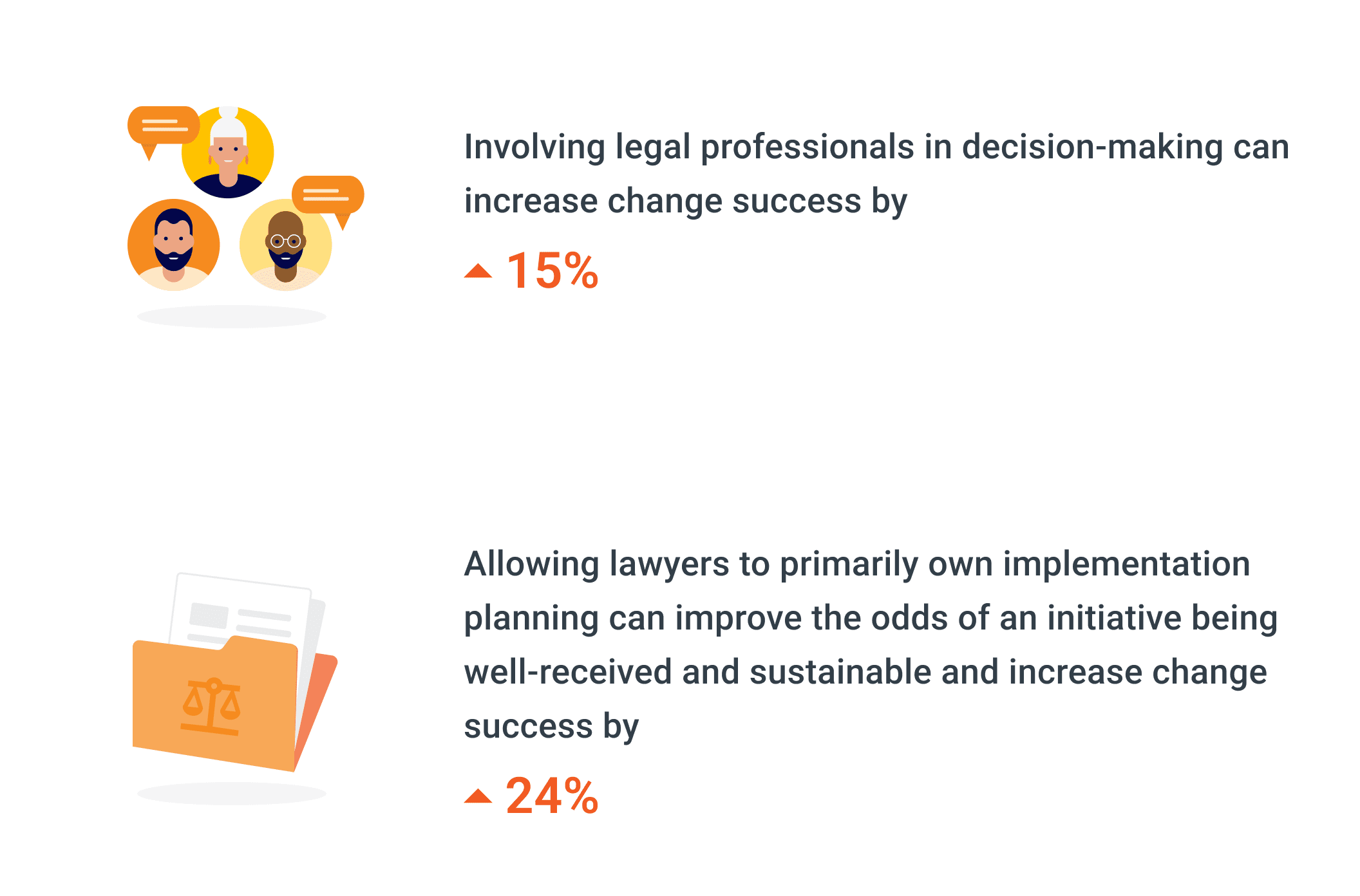Tech-powered workflows reduce friction in law firms

Legal industry challenges: Cracks in the foundation
Law firms have long thrived as partnership pyramids with wide bases supporting their internal complexities.
But over time, issues such as outdated technologies, document management inefficiencies, and knowledge silos have cracked that base, feeding into declining performance.
Law firms reported a decrease of 4.1% in productivity during the first six months of 2023, with an average of 1,538 billable hours per lawyer. "We've never seen numbers this low," said Owen Burman, a senior consultant in the Wells Fargo Specialty Group that conducted the survey.
Source: ABA Journal

Source: Thomson Reuters 2023 State of the Legal Market
Manual processes and ad hoc technology add-ons hinder efficiency and create knowledge gaps that lead to costly errors and delays.
Bespoke technologies for each practice area are not scalable or sustainable. Quick fixes that treat symptoms create the illusion of progress. But point solutions and bloated applications only frustrate end users while root problems remain unsolved.
While more than eight in 10 lawyers surveyed recognize AI's potential to enhance efficiency, successful transformation requires firmwide alignment and commitment. Outdated mindsets stand in your way.
- The adoption of new technologies often hinges on client demand and proven value.
- Risk-averse lawyers worry about the impact of upfront time investments on client service and revenue generation.
- Immediate ROI concerns deter cash-driven law firms from embracing modernization efforts.
Entrenched success fosters resistance to change.
“It is hard to convince a room full of millionaires that they’ve got their business model wrong.”
Richard Susskind, Legal author and Adviser
We can't prevent change, but we can prepare for it. Your firm's success hinges on its readiness to adapt quickly with all the means in your control.
Seasoned lawyers may question new approaches. But emerging legal leaders know their firm needs modern strategies and technologies that solve foundational issues to build a more sustainable, more profitable future.
What do laywers say they need?

Law firm modernization strategies
Firm leaders must clearly articulate the strategic vision for modernizing firm operations. Lawyers must be informed, trained, and supported during this transition.
Strategy 1: Foster a culture of collaborative growth
While technology facilitates collaboration, teamwork is the foundation of success. Shift firm culture toward embracing cooperation and innovation.
- Encourage collaboration between traditionally siloed departments.
- Establish online repositories and internal communication channels for lawyers to share documents, best practices, and insights, and coordinate technology use across departments.
- Align everyone around measurable firmwide goals such as profitability, productivity, and growth.
- Enable the use of data insights to identify cross-selling and other profit opportunities.
Provide lawyers with access to dashboards to track their performance and make informed decisions. Incentives and celebrating team successes reinforce the importance of collective effort.
Strategy 2: Design and refine tech-enabled legal workflows
Align new tools and processes with the natural flow of legal work. Like tailors crafting custom suits, technologists must directly collaborate with lawyers before investing in change to:
- Understand root problems and their related inefficiencies and pain points.
- Map legal workflows. Document the steps taken, the data exchanged, and the systems accessed.
- Identify where technology can automate repetitive tasks, eliminate redundancies, and support decisions.
- Determine where to incorporate role-based and customizable functions, such as those that support contract review, due diligence, and e-discovery.
Embrace an iterative approach with periodic reviews that show if you’re achieving desired results. Continually refine workflows and address usability issues to improve the user experience.
Strategy 3: Build firmwide information-sharing solutions
Firmwide solutions meet many varied needs simultaneously, transforming progress from a mere illusion into a measurable reality.
You can apply automation, analytics, and AI tools at nearly every step of a legal matter. Connecting people, processes, and data creates an agile information-sharing network.
This reliable source of truth fosters visibility across practice areas and enables lawyers to quickly find best practice work product so the firm can leverage its collective knowledge.
Access to matter-specific and business intelligence data empowers legal professionals to refine processes and deliver more profitable services. Prioritize data-driven decision-making to gain actionable insights on:
- Clients' legal needs and risks
- Optimizing resource allocations
- Streamlining operations and improving service delivery
Strategy 4: Address specific legal workplace requirements
In a modern legal workplace:
- All new technology seamlessly integrates with existing infrastructure, including Microsoft 365, for a unified experience spanning the entire legal matter lifecycle.
- Third-party system integrations enable the effortless flow of information and collaboration across locations and platforms.
- A robust, Zero Trust security infrastructure helps ensure that only authorized users can access sensitive information, creating an impenetrable fortress against cyberthreats and building client trust and confidence.

Source: Generative AI in the Law
Partnering with external technology providers can offer access to specialized expertise and additional resources to reduce the burden of internal development.
Strategy 5: Develop critical information governance infrastructure
Firms now need information governance policies to manage the flow of data, protect sensitive information, and comply with legal and ethical standards.
- Provide a centralized platform to manage and track client and matter information, documents, and communications and enable collaborative work.
- Use configurable access protocols to meet the diverse needs of various user groups.
- Standardize methods of data collection, organization, and analyses.
This structured approach also makes it easy for lawyers and staff to find and access relevant information quickly.
Strategy 6: Get everyone on board
A concerted effort with commitment from all levels is necessary to modernize operations and integrate AI, analytics, and automation tools seamlessly into workflows, yielding tangible benefits.

Lawyers, paralegals, administrators, and IT professionals must work together to design modernization strategies, identify areas for improvement, develop and implement solutions, and continuously refine and optimize their technology use.
Trainers, knowledge management teams, or learning & development must offer easily accessible training opportunities such as online tutorials, webinars, and one-on-one sessions.
For any engagement, bring vendors in on the effort when appropriate. In RFPs, don’t just list feature requirements. Ask vendors to solve specific problems. Encourage intuitive and easy-to-use solutions for the less technologically savvy.
Thrive in a friction-free legal ecosystem
In the new, modern legal landscape that emerges:
- A secure and stable technological foundation safeguards sensitive information and ensures uninterrupted operations.
- Lawyers use everyday language to operate tools that automate tasks, correct errors, and provide context-aware assistance. In-app suggestions for relevant documents and appropriate next steps empower lawyers with the right information at the ideal time.
- Easy, intuitive experiences minimize the learning curve.
- No more hopping across programs and wading through irrelevant search results. Legal professionals gain immediate insights for faster, more informed decision-making.
- Instant messaging, document sharing, and task delegation breaks down silos and promotes knowledge sharing for more effective work across teams.
By 2030, 80% of the work of today’s project management discipline will be eliminated as AI takes on traditional functions such as data collection, tracking, and reporting.
Source: Gartner, Inc.
Sharing knowledge efficiently with comprehensive information governance processes built in increases productivity and accelerates project completion. Integrated and embedded tools proactively identify potential roadblocks, suggest course corrections, and provide real-time status updates.
Knowledge fills the cracks in the partnership pyramid, ensuring your firm can continue to support the growing demands of modern legal practice. Every legal professional can reach their full potential as the firm thrives.
Activating high-value knowledge is what makes your business tick. The Knowledge Work Maturity Modeler from iManage helps firms like yours pinpoint where they are on their journey toward modernization and provides a blueprint for bringing the value of your collective intelligence to its full potential.
iManage Commentary
Knowledge is the new global currency
iManage analysis of the Knowledge Work Maturity Model.
